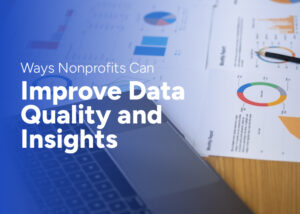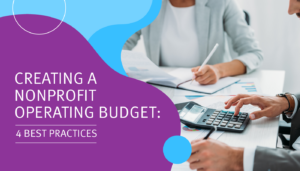In identifying effective board members for your nonprofit, fundraising should be a key skill set in your search. This blog will focus on why this is important and the tactics to help build a fundraising board culture in your nonprofit organization.
A fundraising board and why it’s important
Any good nonprofit has a clear mission and a plan to achieve it, but that doesn’t happen magically. Whether it’s a high school booster club with a $500 budget or United Way Worldwide with its $3.9 billion budget, most nonprofits must have investments from individuals and businesses to achieve its mission. Nonprofits who intentionally and strategically recruit board members that can raise money have an advantage over nonprofits that recruit only for industry expertise, policy, or community/industry representation. Ensuring that you build a board that will have an impact will have a long-term effect on the growth of your organization.
-
The Board Member Investment
Nonprofits who enforce financial requirements will have much greater success in recruiting a board that positively impacts the organization’s financial health. If your organization does not have financial requirements, now is the time to approach that with the existing board.The first step is determining the amount. Many organizations set a minimum requirement. For member organizations like chambers of commerce and industry associations using tiered dues, top levels provide a good guide as to what the minimum requirement should be. Another method for corporations is to set minimum investment company size. A board member employed with a Fortune 500 company will have much greater financial resources than the board member who owns a one-person web design firm and some organizations want to take that into account. The key factor is the board member is invested; which means contributing at a reasonably higher level than the average member or donor.If your board does require community partners that cannot meet the financial requirements because of their own regulations, write that into the policy upfront. A nonprofit or government entity may have in its operating rules that the organization cannot contribute to another nonprofit or cannot raise money for another organization. Having the policy set upfront instead of determining case-by-case will help your organization avoid the slippery slope of exceptions to the investment rules.
Sometimes, board members will ask for a trade for goods and services. Trades can sometimes work, but there are good reasons the barter system was replaced by the monetary system thousands of years ago. Trades tend to work best for hard cost operational services like computers, copier service, or office cleaning services. Advertising and marketing work only if your organization would have bought the advertising anyway. Some nonprofits count the value of the trade at partial value. For example, if the cleaning service is valued at $1,000 a month, the organization will count $500 a month toward the investment. Whatever your organization decides to do with trades, codify it and add it to your minimum investment policy.
Once you have a financial commitment policy in place, it must be enforced! On occasion, potential board members who want to be on the board will say they just can’t make the financial commitment but will raise the money. Don’t take the bait. In more than 10 years running nonprofits, I’ve yet to see a member who makes this pledge deliver on it and for good reason. If the board member isn’t willing to invest, how could he or she convince another to do so?
-
The Board Member Ask
Many organizations expect their board members to not only invest but to fundraise. Again, write the expectations into the policy so there are no surprises. How many leads do they provide? How many dollars are they expected to raise? If an event is involved, how many tickets are they to sell?To help your nonprofit fundraising board members be successful, provide them with tools for fundraising. Collateral should include success stories of what the organization has done as well as hard data on outcomes that clearly and effectively communicate your organization’s return on investment. To best present ROI, report outcomes, not outputs. An output is what you did, like provide job training for 100 individuals. An outcome is what you accomplished. For example, thanks to the job training you provided, 80 individuals secured jobs for which they otherwise would not have qualified, allowing them to increase their earning levels by X amount.Assist the board member in any way that he or she needs help. Go with them on pitch visits, set up the appointments for those that need that kind of support. Follow up with them and the potential investor. Leverage their connections, don’t burden them with logistics.
-
The Accountability To Make Sure It Happens
Reporting where the board stands on its goals for contributions and fundraising keeps the board accountable. Whether it’s a collective summary of where the board is on their investments as well as fundraising, or a scorecard showing what each individual board member has done, reporting back at each board meeting is an effective way to keep fundraising and the role they play at the forefront.
With a good strategy and clear expectations, your organization should be on its way to using one of its most powerful fundraising tools in the tool chest: its board!






